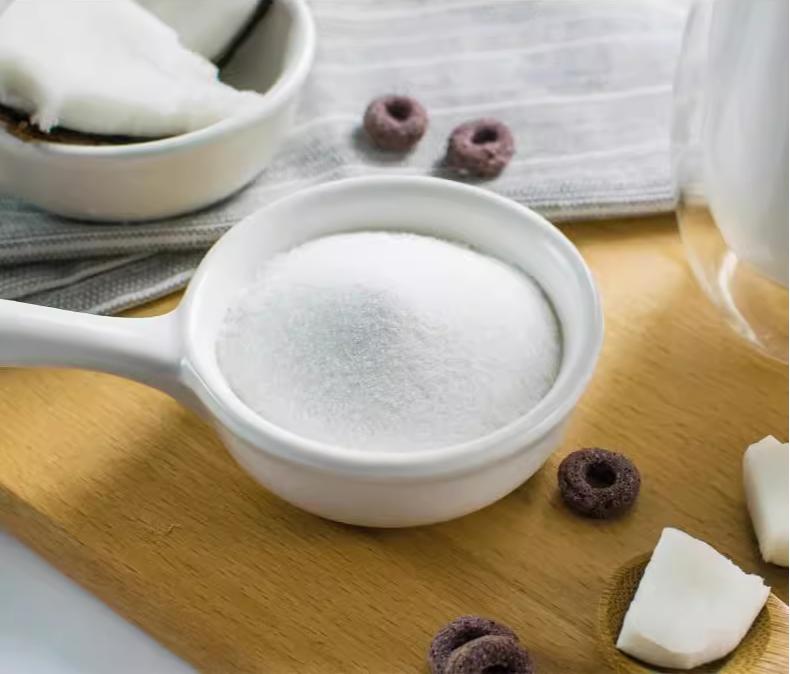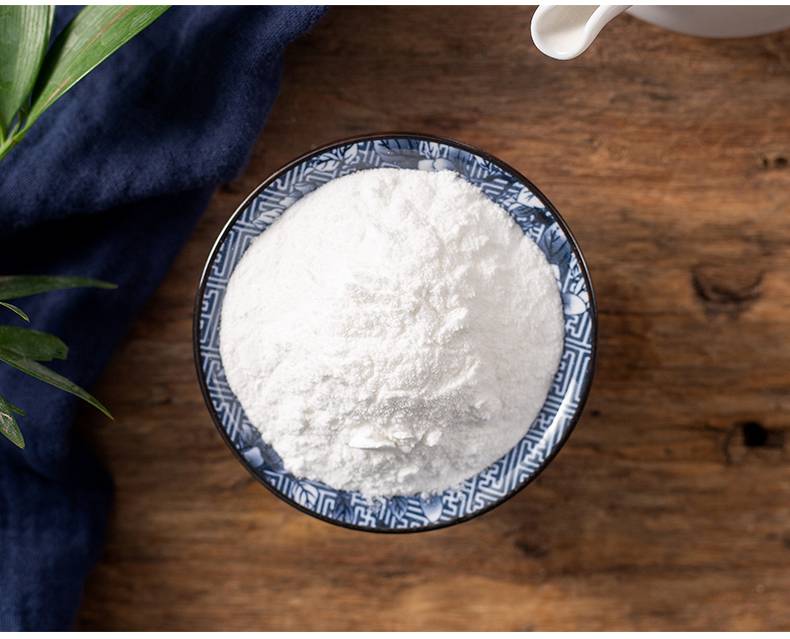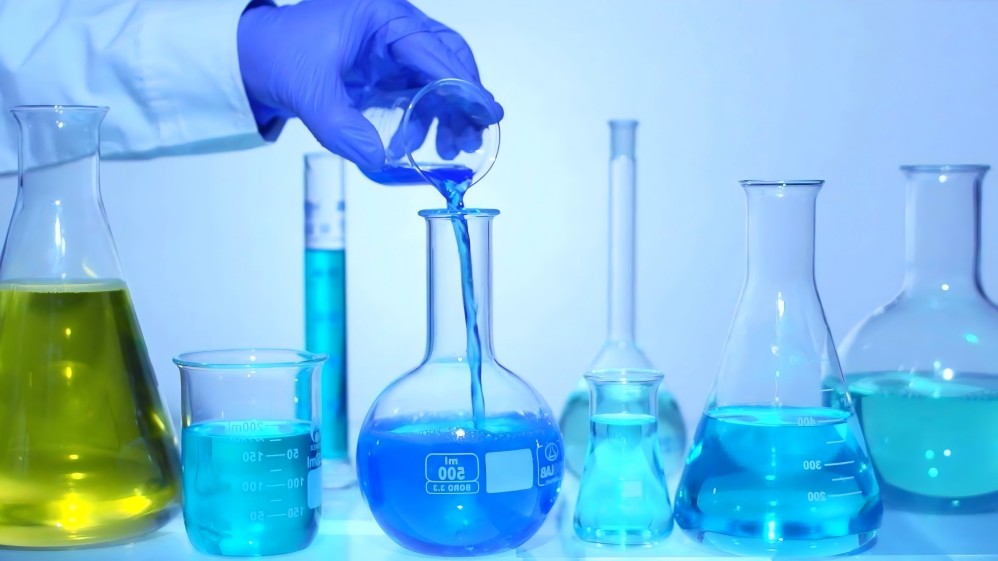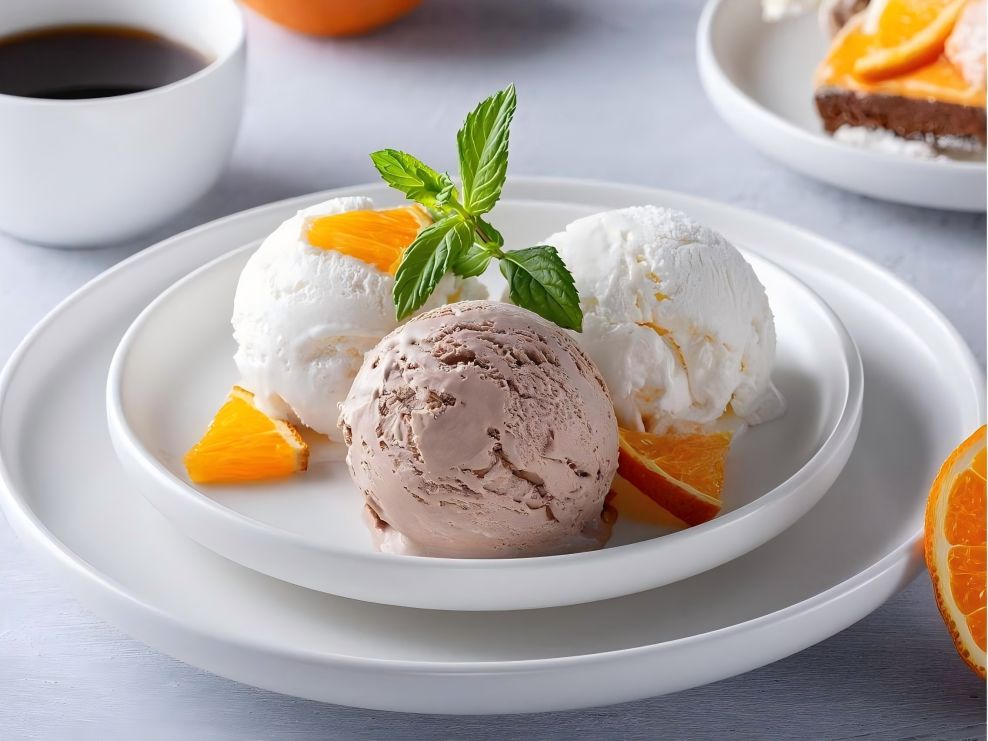What Are the Methods for the Synthesis of Vanillin?
Vanillin, also known as vanillin and methyl vanillin, scientifically known as 3-methoxy-4-hydroxybenzaldehyde, is an important broad-spectrum flavor and organic synthetic raw material. It is one of the most widely used fragrances with the largest production in the world. With elegant and refreshing aroma, it can be directly applied to cosmetics, soaps, cigarettes, pastries, confectionery and baked food industries, and it can also be used as plant growth promoter, fungicide and defoamer for lubricating oil.
Vanillin is an important intermediate for organic synthesis. In China, vanillin is mainly used in food additives, but in recent years, its application in the field of medicine has been continuously broadened, and it has become the application field of vanillin with the most development potential. Besides, it can also be used as polish in electroplating industry and ripening agent in agriculture.
Vanillin is white or light yellow needle or crystalline powder, with the sweet aroma characteristic of vanillin. Melting point 82~83℃, boiling point 285℃, relative density 1.056, soluble in water, ethanol, ethylene glycol, chloroform. Low toxicity, oral LD50 1580mg-kg-1 in rats, widely used in food, cosmetics, tobacco, medicine and other industries.
There are two main synthesizing methods for vanillin, one is chemical synthesis (which can be divided into guaiacol, lignin, safrole, eugenol, p-hydroxybenzaldehyde, 4-methyl guaiacol and p-cresol), and the other is microbial synthesis (which can be divided into microbial fermentation, plant cell culture and enzyme synthesis), which are summarized as follows.
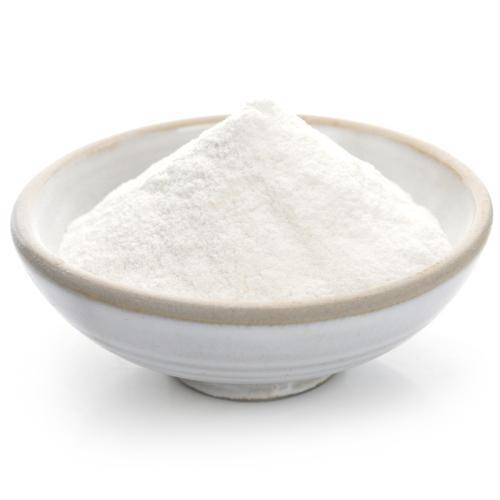
1 Chemical Synthesis
1. 1 Glyoxalate method
Guaiacol (o-methoxyphenol) is condensed with glyoxalic acid, and then acidification and decarboxylation are carried out to produce the crude product, which is purified to obtain vanillin.
Specific examples of preparation are given below.
1. 1. 1 Preparation of crude vanillin
(1) Add o-methoxyphenol, an aqueous solution of glyoxalic acid and aluminum hydroxide to an aqueous solution of sodium hydroxide and react at 25°C with stirring. After the reaction, filter out the aluminum hydroxide from the reaction mixture to obtain the reaction solution; the filtered aluminum hydroxide is washed with aqueous sodium hydroxide. Combine the reaction solution and washing solution, add hydrochloric acid to adjust the PH value to 6, and extract the unreacted o-methoxyphenol with ether for 3 times to recover the o-methoxyphenol. The extracted aqueous solution, sodium hydroxide and copper oxide were added into an autoclave, and the reaction was carried out at 125℃ under the pressure of 202.6 pa (gauge pressure), with the flow rate of 0.15L-min-1 air and stirring, and finally hydrochloric acid was added into the reaction kettle to adjust the PH value to 1.5, and the reaction was extracted with ether for 3 times to obtain the crude vanillin with a yield of 92.1%.
(2) 3-methoxy-4-hydroxymandelic acid was prepared by reacting o-methoxyphenol and glyoxalic acid; then dissolve mandelic acid and sodium hydroxide in water, add cobalt oxide and aniline, and oxidize the reaction by adding oxygen at a flow rate of 0.23L-min-1 in an autoclave at 125°C. The reaction solution was adjusted with hydrochloric acid to adjust the PH value, and then filtered to precipitate. At the end of the reaction, adjust the PH value of the reaction solution with hydrochloric acid, filter and precipitate, then add concentrated hydrochloric acid and appropriate amount of water, and carry out the heating and hydrolysis reaction. Then add concentrated hydrochloric acid and appropriate amount of water, and hydrolyze the reaction with heating. Add ether and shake, dry the ether layer in sodium sulfate, evaporate the ether, and separate vanillin and aniline to obtain the crude vanillin, as 3-methoxy-4-hydroxymandelic acid, the yield was 96.3 %.
(3) Add o-methoxyphenol and aqueous glyoxylic acid to the aqueous sodium hydroxide solution, and react at 25 °C with stirring to obtain hydroxymethoxymandelic acid reaction solution (containing unreacted o-methoxyphenol). Add catalyst CO-W (1.5: 1) and aqueous sodium hydroxide to the reaction solution, and pass air at a rate of 0.15L-min-1 under a pressure of 202.6 pa (gauge pressure) at 125 ℃ to carry out the oxidization reaction, and remove the catalyst by filtration, add hydrochloric acid to the filtrate to adjust the PH value to 1.5, and extract the filtrate with ether for 3 times, and the vanillin contained in the extracted solution was extracted with ether for 3 times. The extract contained about 82% vanillin.
(4) 3-methoxy-4-hydroxymandelic acid mixture was made by reacting o-methoxyphenol and glyoxalic acid, then selenite and sodium hydroxide were added to the mixture, and the oxidation reaction was carried out under the pressure of 125 ℃, 202.6 pas (gauge pressure), and the air was passed in at the rate of 0.15 L-min-1 to obtain the crude vanillin, with the yield of 97%.
(5) Add o-methoxyphenol, glyoxylic acid and sodium hydroxide to water and react at 25°C with stirring. The reaction solution was adjusted to pH 5 with sulfuric acid, and the unreacted o-methoxyphenol was extracted with benzene. Add water, sodium hydroxide and copper oxide to the autoclave, heat to 125 ℃, under the pressure of 303.9 kpa, pass air at the rate of 2 L-min-1, and carry out the oxidation reaction with stirring, then filter to remove the copper oxide, and get the crude vanillin.
1. 1. 2 Isolation and refinement of vanillin
(1) The crude vanillin obtained was adjusted to PH value of 1.5 with sulfuric acid, extracted with methyl isobutyl ketone for 5 times, and the aqueous layer and methyl isobutyl ketone layer were separated; the PH value was adjusted to PH value of 7 with sulfuric acid, and methyl isobutyl ketone was extracted for 5 times at 20 ℃, and separated, and the methyl isobutyl ketone was evaporated, and then the residue was distilled by distillation tower, and the fraction at 149~151 ℃ was collected to obtain the pure vanillin.
(2) Using the aldehyde group in the vanillin molecule and NaHSO3 to generate sodium α-hydroxysulfonate by addition reaction, and easily soluble in water, purify vanillin by extraction method, and then use butyl acetate to extract vanillin into the organic phase, after washing, desolventization, toluene crystallization, and ethanol recrystallization to get the product, and the process flow is shown in Fig. 1.
The purification of vanillin by sodium bisulfite back-extraction has better selectivity and yield, and can achieve the separation and purification of industrial production.
Glyoxalate method is the most important synthesis route of vanillin at present. With less waste, convenient post-treatment and high yield, this process is the most commonly used method in foreign countries. More than 70% of the output of vanillin in foreign countries is produced by this method, such as Rhodia, the production capacity of which is 6000t-a-1. At present, only a small number of manufacturers adopt this method, mainly due to the relatively high price of domestic production of glyoxalic acid, and there are some key technological problems, such as the reuse of wastewater (1 t of vanillin generates about 20t of wastewater), product yield and so on, which have not been well solved yet. There are some key technical problems such as wastewater reuse (1 t vanillin produces about 20t wastewater), product yield and so on which have not been solved well. Domestic manufacturers mainly adopt this method, such as Snow Leopard Group, Wuxi Central Asia Chemical Company Limited, Tianjin Northern Spice Factory and Taixing Organic Chemical Factory. Other manufacturers mainly use dimethylaniline method, but many domestic manufacturers, such as Jihua Company and Zhonghua Chemical Group, are changing the original process to glyoxalate method.
In addition, foreign countries have also developed trichloroacetaldehyde method (India), with a yield of about 60%, chloroform method, with a yield of about 39%, and electrolytic oxidation method, with a yield of more than 90%, low pollution and low power consumption, but there is no report on large-scale industrialized production.
1.2 Dimethylaniline method
Taking N,N-dimethylaniline as the starting raw material, it is acidified into salt by hydrochloric acid, and then nitrosated with sodium nitrite to obtain nitroso compounds, condensed with o-methoxyphenol and formaldehyde to obtain the crude product, and then extracted, concentrated, secondary distillation, crystallized, and dried to obtain the final product vanillin. The separation process of this route is complicated, the reaction conversion rate is low, the production yield is about 57%, and the three wastes are serious, the production of 1 t vanillin produces about 20 t of wastewater (containing phenols, alcohols, aromatic amines and nitrites), which is difficult to be processed, and there is another 1~2 t of solid residue. This process has been phased out in foreign countries, but it is still the main production method in China, and manufacturers with larger scale of production in China still adopt this method.
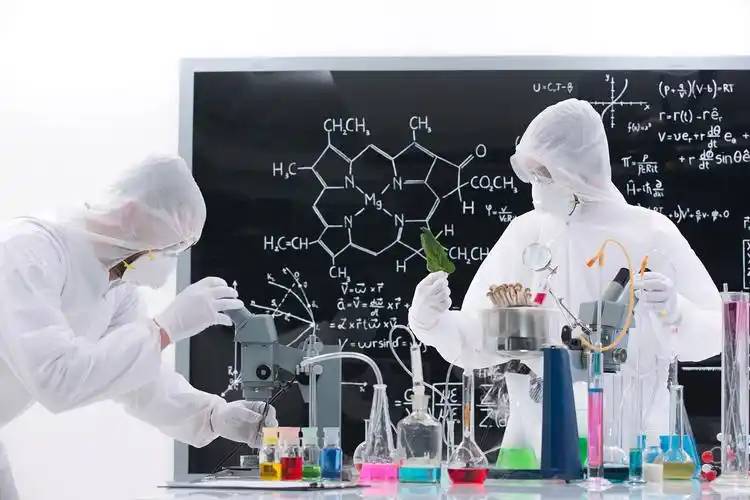
1. 3 Lignin method
Lignin is contained in fiber materials and pulp waste liquid, mainly in the form of lignosulfonate. In the paper industry, every t of sulfate pulp by-product waste liquid is about 7 m3, which contains about 200 kg of lignosulfonate, and its synthesis method is to oxygenate lignosulfonate in alkaline medium, and then hydrolyze it to obtain vanillin.
Process: Lignosulfonate is reacted by compressed air at 155~160℃, the pressure is controlled at 0.47~0.69 Mpa, the oxidized liquid is extracted by 201×7 strong alkaline ion-exchange resin, and the adsorption column is a two-stage tandem, and desorption is carried out in stages, so as to solve the contamination problem of the resin. The adsorption temperature was 19 ℃, and the desorption solution was hydrochloric acid -50% ethanol solution. The desorbed liquid was concentrated under reduced pressure, distilled with water vapor, crystallized in toluene for the second time, distilled with water vapor under pressure for the second time, and recrystallized with ethanol to obtain the product, which is in accordance with the standard of food chemical additives.
This method has a wide source of raw materials, a long history of production, low cost of raw materials and full utilization of waste materials, but the yield of the product is low, only 10%-15%, and the pollution problem is serious. It is reported that every 1 t of vanillin produced nearly 150 t of wastewater, so many countries, including the United States, have been phasing out the route. However, due to the low cost of raw materials and the use of paper waste liquid, the method continues to be researched or has the potential.
1.4 Eugenol method
The content of eugenol in clove oil is about 85%~90%. The synthesis methods can be divided into 2 types: direct oxidation and indirect oxidation.
1. 4. 1 Direct oxidation
Process: In the presence of alkali (NaOH or KOH), eugenol is isomerized with alkali to isoeugenol salt by co-heating, and isoeugenol salt is oxidized (oxidizing agents are O3, H2O2, K2CrO3 + H2SO4 or nitrobenzene, etc.) to obtain vanillin salt, and then free vanillin can be obtained by acidification.
1. 4. 2 Indirect oxidation
Process: Firstly, under alkaline condition, isomerize eugenol to produce isobutylphenol, then eugenol reacts with (CH2CO2)O to produce isobutylphenol acetate, and finally oxidize it with K2CrO3 +H2SO4, and hydrolyze it to vanillin in acidic medium. The direct oxidation method is generally adopted in the industrial production of vanillin. The vanillin produced by this process has better aroma, but the source of raw materials is difficult, the production cost is high, and the yield of the product is about 60%, so at present, only a small number of manufacturers have adopted this process, and the overall output is very small. At present, only a few manufacturers adopt this process and the overall output is very small. Domestic manufacturers mainly include Shanghai Research Institute of Spices of China National Light Industry Council. Besides, there is also electrochemical oxidation method, the yield can be up to 74.5 %, but the cost is high, and there is no report of industrialized production.
1. 5 4-Hydroxy 3-methoxybenzyl alcohol method
This method directly oxidizes 4-hydroxy 3-methoxybenzyl alcohol to produce vanillin.
Process: In a reactor, add 4-hydroxy 3-methoxybenzyl alcohol to aqueous sodium hydroxide solution, then add lead nitrate solution (1 mol 4-hydroxy 3-methoxybenzyl alcohol corresponds to lead equivalent to 2.5 × 10-3 mol).
The catalyst was mixed with 1 % pt/C catalyst, and the oxidation reaction was carried out at 30 ℃, 101.3 pa under vigorous stirring with oxygen. After stopping the oxygen absorption, the catalyst was filtered, and the filtrate was acidified with sulfuric acid, filtered and dried to obtain vanillin with 77.6% yield.
1. 6 p-Hydroxybenzaldehyde method
Vanillin is obtained from p-hydroxybenzaldehyde by bromination followed by methoxylation.
Process: P-hydroxybenzaldehyde and chloroform were added into the reactor, heated to dissolve, and then the mixture of bromine and chloroform was added slowly and dropwise, and the temperature of the reaction was controlled at (7±2)℃, after the reaction was finished, it was left overnight, and then filtered, and the cake and the product recovered from the mother liquor were dried together to obtain the crude 4-hydroxy 3-bromobenzaldehyde. The crude product was recrystallized with water to obtain the pure product, and a small amount of dibromide was produced as a by-product.
To a reactor with methanol, metallic sodium is added with stirring. After the sodium is dissolved, the appropriate amount of methanol is recovered, and then DMF, 4-hydroxy 3-bromobenzaldehyde and copper oxide are added, and the reaction is carried out at 96~100℃. At the end of the reaction, DMF was recovered under reduced pressure, and hot water was added to dissolve the residue, which was filtered while hot. The mother liquor was acidified with hydrochloric acid to pH 3~4, filtered and dried to obtain crude vanillin, and the crude product was recrystallized with water to obtain white crystal vanillin.
The method was successfully researched by Dalian University of Technology, and the yield of each step of the two-step reaction is about 90%, and the total yield is more than 85%. In the past, DMF was used as the solvent for the methylation reaction, which was expensive and not easy to be recovered, but now it has been improved to use methanol as the solvent in the presence of a small amount of DMF and copper carbonate as the catalyst. This process route is easy to obtain raw materials, simple operation, few steps, high yield, but the price of raw materials is high. According to the current price of synthesized vanillin, this process has no practical significance for production. There is no report on the direct production of vanillin by this process in China. However, the production of p-hydroxybenzaldehyde in China is increasing year by year, and the price is decreasing year by year, so this method still has the value of utilization.
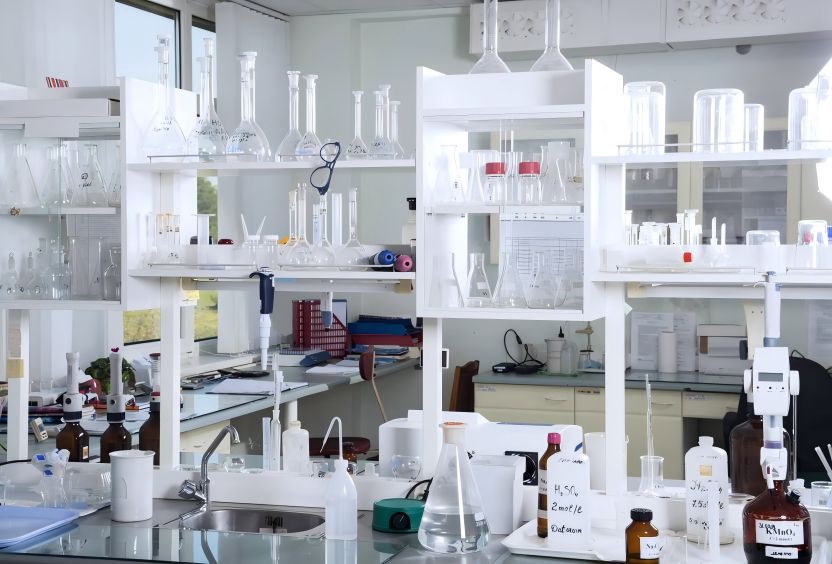
1.7 4-Methylguaiacol method
4-Methylguaiacol is present in the light component of pine tar, a by-product of forestation, under the scientific name p-methyl-o-methoxyphenol. It is produced by dissolving 4-methylguaiacol in a solvent and oxidizing it directly to obtain vanillin.
The process route is short, the total yield is ≥75%, the post-treatment is simple, the three wastes are very small, the wastewater produced by 1 t of product is about 3 t, the treatment volume is small, and the products have pure aroma, which are mainly exported to Europe and the United States. This process is newly developed in recent years and has applied for the national invention patent, the disadvantage is that there are few raw material sources. At present, only Fujian Yongan Forestry Co., Ltd. adopts this process route for production.
1. 8 P-cresol method
There are generally two routes for p-cresol method, one is to use p-cresol as raw material, through oxidation, monobromination and methoxylation, which is actually an extension of p-hydroxybenzaldehyde method. This route is easy to operate, and the yield of the first reaction reaches 91%, and it can be used directly for the next synthesis without separation, and the total yield can reach 85%.
Another route is the chlorination of cresols, followed by the interaction with sodium methanol and the final oxidation of vanillin. The reaction yield of this route is not as good as the former one. The cresol synthesis route is a relatively new synthesis method, which has been mostly studied in China, and the country is rich in cresol resources, so this method has a better development prospect. At present, there is no report on the large-scale production of cresol by this method at home and abroad.
1. 9 Safrole method
The raw material of safrole (from natural safrole oil) is converted to isosafrole by alkali treatment, oxidized to piperonal, then made into protocatechuic aldehyde, and finally obtained vanillin by dimethyl sulfate methylation.
The main problems with this process are the shortage of raw materials, the high cost (but lower than the eugenol method), the complexity of the process, and the formation of isovanillin in the product, which is difficult to remove. It was first used by Takasago in Japan, but there are very few manufacturers using this process today.
2 Microbiology
2.1 Microbial fermentation
In 1977, Tadasa K isolated a strain of Corynebacterium sp. that could convert eugenol into vanillin, thus opening up a new way to prepare vanillin biologically. Subsequently, many bacteria and molds were found to be able to convert eugenol, isoeugenol, acephate, glucose and other compounds into vanillin, and vanillin could be synthesized by microbial fermentation using a variety of substrates.
2. 1. 1 Eugenol or isoeugenol as a substrate
Fungi are used to convert eugenol or its isomer eugenol to vanillin. Besides Corynebacterium sp., Serratia sp., Klebsiella sp., Enterococcus sp. and Serratia sp. are also capable of converting eugenol into vanillin. sp., Klebsiella sp., Enter- obacter sp., and certain fungi of the class Hemiptera. Moreover, Serratia, Klebsiella and Enterobacter are also capable of converting isoeugenol to vanillin, while Bacillus subtilis and Rhodococcus rhodochrous also have the ability to convert isoeugenol to vanillin.
Fungal strains of the order Hemiptera synthesized vanillin by converting eugenol in low yields, with the highest yield being 0.027 g L-1. Clostridium perfringens strain B2 was able to convert isoeugenol to vanillin using isoeugenol as the sole carbon source in a yield of 0.61 g L-1 , with a molar yield of 12.4 % (in isoeugenol). The yield was 0.61 g L-1 with a molar yield of 12.4 % in isoeugenol. The molar yield of vanillin (in isoeugenol) was up to 58 % under optimal laboratory culture conditions when isoeugenol was used as the substrate for R. purpurea MTCC289. Serratia marcescens DSM30126 showed a molar yield of 0.018 g-L-1 of vanillin (in terms of eugenol) in 0.1 % with eugenol as the substrate, and a molar yield of 3.8 g-L-1 of vanillin (in terms of isoeugenol) in 20.5 % with isoeugenol as the substrate.
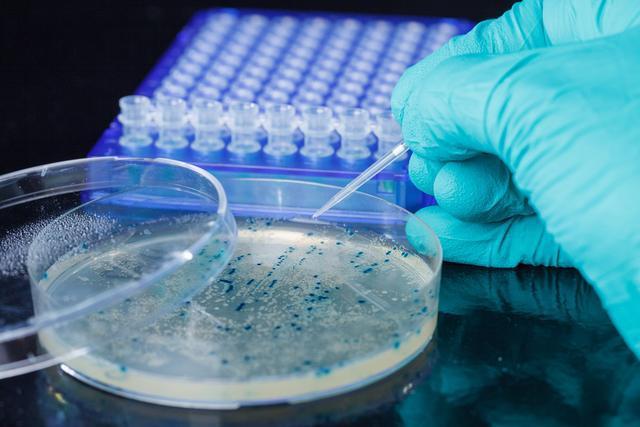
2. 1. 2 Ferulic acid as substrate
Ferulic acid, chemically known as 4-hydroxy 3-methoxyacrylic acid, is widely found in agricultural by-products such as corn gluten and grain bran. There are two ways to produce vanillin with ferulic acid as the substrate: one requires only the action of a single bacterium, and the other requires the combined action of multiple strains of bacteria.
Single strains of fungi from the group of Hemiptera, Bacillus coagulans and Amycolatopsis sp. have been reported for the production of vanillin by fermentation. The use of a fungal strain from the order Hemiptera gave only 0.0552 g L-1 of vanillin, whereas the production of vanillin from 4-vinylguaiacol was achieved using Bacillus coagulans strain BK07, which uses ferulic acid as its sole carbon source. This strain was able to metabolize more than 95% of ferulic acid within 7 h, which is the fastest metabolism of ferulic acid reported so far, and the conversion of ferulic acid to vanillin by the patented method of Rabenhorst J et al. using Soil Filamentous Bacterium DSM9992 in yields of up to 11.5 gL-1 has not yet been reported.
The "two-step bioconversion method" proposed by Lesage-Meessen L et al. is a typical example of multi-strain vanillin production, which utilizes Aspergillus niger and Pycnoporus cinnabarinus to complete the transformation process. The method utilizes Aspergillus niger and Pycnoporus cinnabarinus to complete the whole transformation process. Firstly, Aspergillus niger bacteria converted ferulic acid into vanillic acid with a yield of 0. 92g-L- 1 and a molar yield (in terms of ferulic acid) of 0. 92g-L- 1. The yield was 0.92g-L- 1, and the molar yield (in terms of ferulic acid) was 88%; and then the vanillic acid was reduced to vanillin by Rhodobacter cinnabarinus. The reduction of vanillic acid to vanillin was carried out by M. verticillioides, with a yield of 0.237g-L-1 and a molar yield of 88% (as ferulic acid). (The yield was 0.237 g L-1 with a molar yield of 22 % (as vanillic acid). Recently, they used corn bran as the sole carbon source instead of They recently used corn bran as the sole carbon source instead of vanillic acid to create a "vanillin crystal" without any purification measures. They recently created a "two-step bioconversion method" to obtain vanillin crystals without any purification measures by using corn bran as the sole carbon source.
It was found that during the reduction of vanillic acid to vanillin by M. verticillioides, the yield of vanillin was reduced due to the formation of methoxyhydroquinone as a by-product. When the mass concentration of vanillin in the medium exceeded 1.0 g-L-1, it would produce strong toxicity to M. verticillioides, slowing down its growth, and the proliferation of the strain was not conducive to the production of vanillin. If we add cellobiose into the system, we can significantly reduce the generation of methoxyhydroquinone, and increase the yield of vanillin by 3.3 times to 0.725 g L-1. If we add appropriate amount of XAD-2 resin to adsorb the vanillin, it can regulate the mass concentration of vanillin in the medium and the growth rate of the strain, and we can greatly improve the mass transferring effect by using the mechanically stirred bioreactor. Moreover, the use of mechanical stirring bioreactor can greatly improve the mass transfer effect, and the yield of vanillin will reach 1.575g-L-1.
2. 1. 3 Glucose as substrate
Glucose is converted to vanillic acid by Escherichia coli recombinants (Escherichia coli KL7/PKL5.26Aor KL7/PKL5.97A), and then vanillic acid is reduced by aryl aldehyde dehydrogenase isolated from Neurospora crassa to produce vanillin. Stable expression of E. coli recombinants is required to make this technology industrially available.
In summary, although the sugar is inexpensive, how to realize the stable expression of E. coli recombinants is the key to practical use. From the viewpoint of raw material resources and biotechnology in China, the production of vanillin by bioconversion with isoeugenol and ferulic acid as substrates is more promising.
2.2 Plant cell culture methods
With the development of modern bioengineering technology, people began to utilize cell culture to produce vanillin. The first one was the artificial cultivation of Vanilla planifolia cell, which utilized the property of Vanilla planifolia to secrete vanillin externally, but the yield per unit volume was not high, only about 0.01g-L-1. In 2005, a new method was found to convert specific additives into vanillin, such as capsicum frutescens sell, and so on. In 2005, a new method was found to convert specific additives into vanillin, such as capsicum frutescens.
Cao Mengde et al. found that the addition of different types or concentrations of phytohormones (naphthalene acetic acid and 6-benzyl adenine) had no effect on the growth of cells in suspension culture of G. vivigata cells, but the effect on the production of vanillin was obvious, and the use of a combination of naphthalene acetic acid and 6-benzyl adenine resulted in the production of a greater amount of vanillin. The production of vanillin was negatively correlated with cell growth, so a two-step culture method could be considered for vanillin production in vanilla cells. In addition, shrubby pepper cells and Haematosossus pluvialis cells can also convert additives (isoeugenol, protocatechuic acid, caffeic acid, etc.) into vanillin.
In summary, the efficiency of the current plant cell culture methods for vanillin production is relatively low, and there is still a big distance from the industrial application.
2.3 Enzymatic methods
All biological metabolic reactions are enzymatic reactions, and although the mechanism of action of the above methods is not yet clear, it is certain that they are produced by the action of one or more enzymes. If these enzymes can be isolated and the enzymatic reaction utilized, vanillin can be obtained directly.
Van den Heuvel Robert HH et al. from the University of Wageningen, the Netherlands, found that vanillin can be produced by vanillyl alco- hol oxidase (VAO) through two pathways. One is the production of vanillin from wood tar alcohol by vanillyl alcohol in the presence of VAO; the other is the conversion of vanillyl amine to an intermediate product by VAO under alkaline conditions, which is then hydrolyzed to produce vanillin. In another case, vanillylamine is converted to an intermediate product by VAO under alkaline conditions, and then hydrolyzed to produce vanillin. Some patents have reported that lipases named chirazyme L-2, c-f, and c2lyo were able to convert isoeugenol and pine aldehyde into vanillin, and the mass fractions of vanillin obtained were 30.4 % and 83.1 %, respectively.
Enzymatic reaction has incomparable advantages because of its high efficiency, specificity, mild reaction conditions, easy purification of products, low energy consumption, low pollution, simple operation and easy control. However, how to make use of enzyme theory, chemical engineering and modern biotechnology to improve and modify the existing enzymes, study their immobilization technology and develop suitable multi-enzyme reactors will be the main tasks for the enzymatic production of vanillin.
Vanillin is produced by biotransformation of actinomycetes in immobilized cultures in a medium containing organic phosphates with the addition of ferulic acid or sodium ferulate. In the United States, a two-step technology for the preparation of vanillin from glucose has been developed and is expected to be industrialized in the near future. Rhodia has invested heavily in research on biofermentation technology to develop a new process for the production of vanillin to replace the chemical production of vanillin.
The above methods of vanillin production have their own advantages and disadvantages. Among the fully synthetic methods, glyoxylate and lignin are lower in production cost, but the products of lignin method contain more heavy metals and generally cannot be used in food and pharmaceutical industries. Safrole, eugenol and 4-methylguaiacol are semi-synthetic methods, the raw materials are from natural plant extracts, the cost is high and they are natural grade products. Because safrole is harmful to human beings and isosafrole is difficult to be removed from the products, which affects the aroma, the products of this method are generally not used in food and cosmetics. From the point of view of the quality of the aroma of the products, eugenol and 4-methylguaiacol are better, and they are generally used in high and middle grade raw materials of incense.
3 Technology Outlook
The process route of preparing vanillin by glyoxalic acid method is mature, the source of raw materials is wide, the process conditions are easy to control, the yield is high, the pollution is less, and with the maturity of guaiacol synthesis by phenol method, the price of guaiacol is expected to decrease, which makes this process route more advantageous. Therefore, this process is the development direction for the reform of old vanillin process in China.
The production of vanillin from p-cresol is a newly developed process, which has been researched in depth in China. Although it has not yet been put into large-scale application, there will be progress soon. Since China is a large coal country with abundant cresol resources, the development of this process route has great strategic significance and development prospects.
Eugenol and 4-methylguaiacol, which utilize natural plant extracts as raw materials, are natural grade products with good aroma and have a certain market in developed countries. This kind of process not only can fully utilize our resources, but also is a good variety for exporting and earning foreign exchange, so this kind of semi-synthetic method still needs to be developed.
Microbial fermentation, especially the use of natural raw materials to produce fermentation products, will be an important topic in the research of vanillin synthesis. China is still in the initial stage in this field, and only Cao Mengde and others from Huazhong University of Science and Technology (HUST) have studied the suspension culture of vanillin cells, and Yao Risheng and others from Hefei University of Technology (HFUT), together with Xiamen Yongquan Group Company Limited (XMG), have researched on the production of vanillin by bio-oxidation method. The production of vanillin by bio-oxidation method has attracted more and more attention, and many famous vanillin producing companies in the world, such as Schniken (Italy), Boreai (Norway) and Monsanto (USA), have strengthened their research on the production of vanillin by bio-oxidation method in order to occupy a dominant position in the future market of flavors and fragrances.
In addition, many scholars at home and abroad have also carried out a lot of research on the purification process of vanillin, and proposed new processes such as amino acid method, saturated hydrocarbon method, etc., but none of them has been applied to industrialized production due to a variety of reasons.
References:
[1] Xu Kexun Handbook of Fine Organic Chemical Raw Materials and Intermediates [M]. Chemical Industry Press, 1997. 3-82.
[2] Jiansheng Li, Pei Yao. Progress of domestic vanillin synthesis technology[J]. Fine and Specialty Chemicals, 1999,(2):17.
[3] Song Guoan Progress of vanillin synthesis process[J]. Shanghai Chemical Industry, 1998.(6): 31-34.
[4] Zhao Yuan, Ding Shaomin, et al. Research progress of vanillin production process[J]. Chemical Engineering Progress, 2001,(3):13-16.
[5] Wang QY, et al. Synthesis of vanillin[J]. Guangdong Chemical Industry, 2004.(8): 18-20.
[6] WANG Jianxin, JIN Baode, et al. Research on the synthesis of vanillin from guaiacol and glyoxylate[J]. Fine Chemical Industry, 2000,(9):511-514.
[7] Li Jiansheng Preparation of vanillin from guaiacol and glyoxylate[J]. Jiangsu Chemical Industry, 1993, 21(3):13-16.
[8] Li Yaoxian, Ma Anjie, et al. Synthesis of vanillin and ethyl-vanillin by glyoxalic acid method[J]. Fine Chemical Industry, 1999,(16):362-365.
[9] Yuan Cubing, Ding Yong. Progress of vanillin synthesis and separation technology [J]. Modern Chemistry, 1990, (1): 33-35.
[10] Huang Xiaoxiong, Xiao Yumin. Progress of vanillin production technology[J]. Chemical Technology Market, 2003,(6):16-19.
[11] Zhu Huixia, Deng Shengsheng, et al. Research progress of vanillin biosynthesis [J]. Fine Chemical Industry, 2004,(2):125-127.


 English
English French
French Spanish
Spanish Russian
Russian Korean
Korean Japanese
Japanese